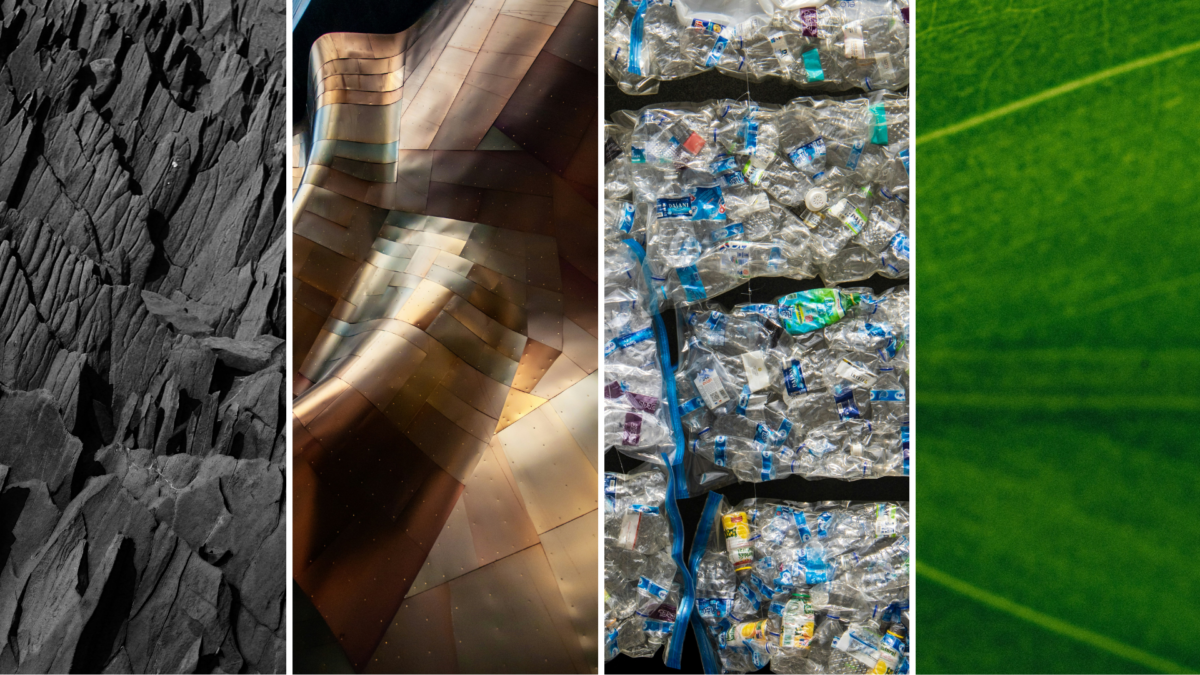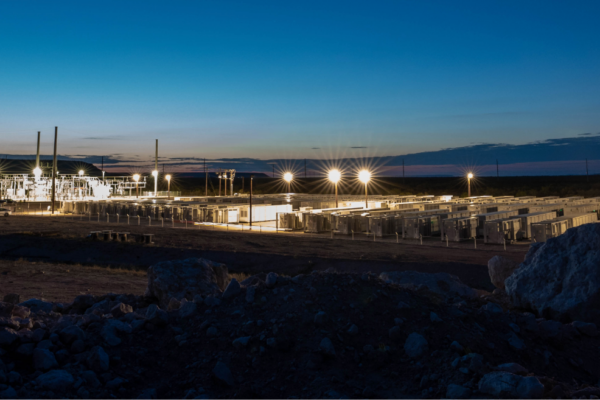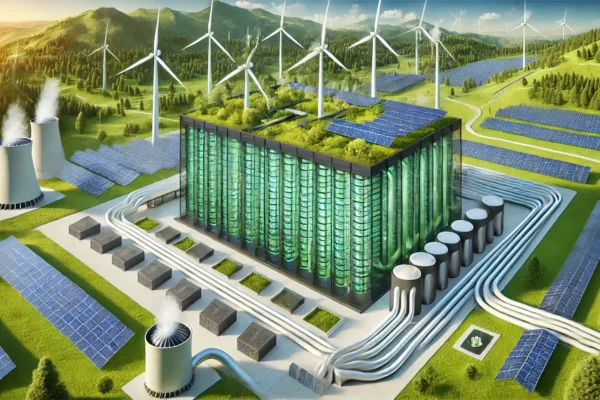The drive to decarbonize emissions-intensive industries and achieve net zero goals will necessitate a massive increase in available critical minerals. The projected demand for nickel and cobalt (expected to surge twenty-fold by 2040) as well as lithium (believed to increase 42-fold by 2040) is staggering.
Fulfilling these needs while maintaining the abundance of the Earth’s natural resources will pose an enormous challenge. Add to that our desire to decrease reliance on global supply chains involving counterparties that may not have our best interests at heart and the challenge can appear insurmountable. So how can we reframe it?
As investors in climate solutions, we aim to approach such challenges of perceived scarcity with an abundance mindset, a concept pioneered by Peter Diamandis in his book Abundance. When applied to climate change, abundance thinking serves as a powerful lens through which we can find technology and business model innovations that foster resilience, adaptation, resourcefulness, ingenuity, collaboration, and cooperation.
After co-investing with At One Ventures in Inlyte Energy—a startup creating a novel grid-scale long-duration battery made from the earth-abundant materials sodium and iron—we saw an opportunity to co-create a salon event unpacking four materials with a curated group of entrepreneurs and experts to help us reframe perceived scarcity as abundance.
Inside the Abundant Materials Salon
Focusing on four materials that are core building blocks of our modern world—carbon, metals & minerals, biomass, and plastics—the evening challenged attendees to reconsider how we can work with the Earth, our abundant natural resources, and economic models that reward circularity.
Below, we share our research prompts, featured portfolio companies creating solutions, and discussion takeaways on novel approaches to material production and utilization today.
1. Carbon
Carbon, totaling 1.85 billion tons on Earth and ranking as the fourth most abundant element in the universe, is a fundamental building block of all known life. Its remarkable capacity to form stable compounds with other elements underpins its vital role. Carbon-based materials such as diamond, graphene, carbon fiber, and carbon nanotubes exhibit exceptional properties essential for advanced technological applications.
The Problem: A chicken and egg dilemma of carbon capture and utilization
Carbon emitted into the atmosphere is rapidly warming our planet. Despite the existence of technologies to capture, utilize, and store carbon dioxide (CCUS), poor economics have slowed widespread adoption. Today, direct air capture is priced as high as $1,000/ton and point source capture suffers from costly operating expenses, especially from contaminants in flue gas streams. Our provocative question at the salon explored how to best use captured carbon dioxide as an input to other products, thereby creating a more robust carbon value chain and supporting the rapid deployment of CO2 capture projects worldwide.
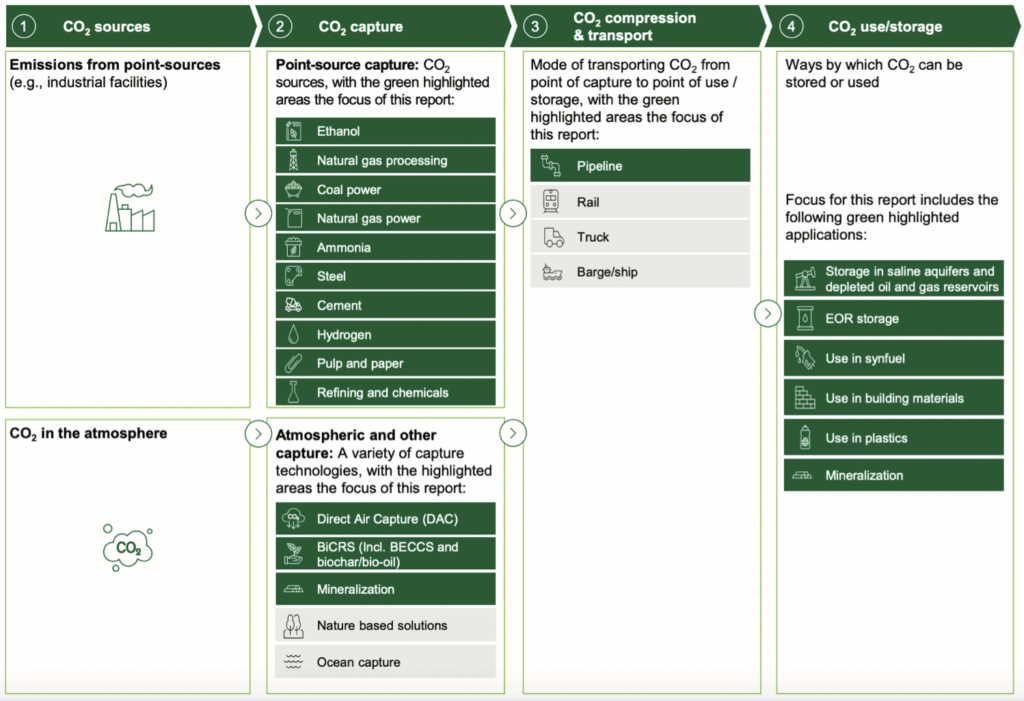
Why focus on this problem now?
- Technological innovation is driving costs down: point source capture is 60% less expensive than it was a decade ago.
- The Inflation Reduction Act set out to fundamentally change the economics of the carbon value chain, creating $6 billion of carbon capture development grants and substantially increasing the 45Q tax credit for CCUS. DAC technologies, in particular, received more attention and secured $180/ton credits for storage and $130/ton credits for utilization.
- Despite announced carbon capture projects being on track for net zero scenario goals, we have seen almost no growth in operational capacity as developers are hesitant to deploy without securing offtake at competitive prices.
Takeaways from the expert discussion
IRA incentives can reduce the input costs to utilization, helping with market formation, but we also need to invest in the most promising startups that can further valorize captured carbon. Participants agreed that, rather than only targeting commodity forms of carbon—like carbon black—or niche, high-end forms—like graphene—the industry needs investment in robust, medium-value products. Some promising areas of innovation in the carbon value chain include bio-manufacturing, construction materials, and carbon fiber, although co-location between capture and utilization is essential for any economics to pencil. Over the next five years, the market will continue to need policy support to facilitate market formation while building sustainable long-term business models with the support of advanced commitments. In the meantime, innovation is required to lower operating expenses for capture projects, such as increasing the durability of membranes or reducing labor hours required for replacements.
Valo startups building with carbon
- Boston Materials is making stronger, lighter, more durable composites using carbon fiber scrap as an input.
- Modern Hydrogen is decarbonizing natural gas to produce clean-burning hydrogen and solid carbon on site.
- ARRIS is manufacturing high-performance, high-volume carbon composites that are easily recyclable to keep the carbon in circulation.
2. Plastics
The world generates a staggering 400 million tons of fossil-based plastic annually, which is predominantly used in single-use packaging. However, only 15% of this plastic is collected for recycling, with a mere 9% actually recycled due to the complexity of sorting various plastic types and limited recycling capacity at Material Recovery Facilities (MRFs). Consequently, the economy suffers a substantial loss of $80-120 billion each year due to plastic disposal rather than recycling. And sadly, far too much of that disposed plastic pollutes our waterways and oceans.
The Problem: Significant and growing emissions from plastics, low collection rates, and wasted resources.
Plastic poses unique environmental challenges as it accumulates and persists in the ecosystem, impacting human health and contributing to 3.3% of global CO2 emissions. Finding cost-competitive alternatives remains challenging due to plastic’s versatility and cost, causing demand to remain high. Indeed, due to growing demand, the petrochemical industry plans to invest billions to expand plastic production by 40% in the coming decades.
Why focus on this problem now:
- Market Demand: Corporate demand for post-consumer recycled content (PET) is 4x the supply (2B pounds vs 0.5B pounds).
- Regulation: In late 2023, the EU pledged to ban the export of plastic waste which should force investment into new capacity. In addition, the UN Global Plastics Treaty is progressing toward final negotiations, and extended producer responsibility (EPR) laws imposing taxes on packaging going to landfill are spreading from the EU to now 7 US states.
- Technology: Global bioplastics production capacity is set to increase significantly from around 2.18 M tons in 2023 to approximately 7.43 M tons in 2028, which will help advance these technologies down the cost curve.
Takeaways from the expert discussion
Plastic is an incredibly versatile material that is hard to replace, so the key is to keep it in circulation as long as possible. Single-stream recycling and the lack of consumer education lie at the root of low recycling rates in the US, so policy and regulatory incentives are key. We also need to think about upcycling low-value plastics as recycling does not make economic sense given the low cost of virgin materials. While some studies show customers have a willingness to pay a premium for recycled plastic, demand is not inelastic. That means that regulations are key to moving us away from plastic in the short term. But in the medium to long term, producers need to drive towards cost parity for plastic alternatives to take serious market share.
Valo startups making plastic circular or eliminating plastic from everyday products
- RoadRunner Recycling is transforming waste management with an AI-powered recycling solution that increases recycling rates while saving customers money on their waste management
- Novoloop is upcycling plastic waste into high-value, high-performance materials that are drop-in replacements to virgin materials.
- Fluus is pioneering zero-waste feminine hygiene products to be flushable, biodegradable, and microplastic-free.
3. Metals & Minerals
Since 2010, there has been a 50% increase in the minerals needed for power generation. A typical electric vehicle alone demands six times the mineral inputs compared to a conventional one. More mineral demand means more mining, which requires significant energy input—breaking down rocks is the most energy-intensive phase in the process, contributing to approximately 4% of global annual energy consumption.
The Problem: A growing need for metals and minerals paired with energy-intensive production methods.
An energy system powered by clean technologies differs profoundly from one fuelled by traditional hydrocarbon resources. Developing this system, the technologies, and the grid infrastructure to support it, requires more metals and minerals than its fossil fuel counterpart(s).
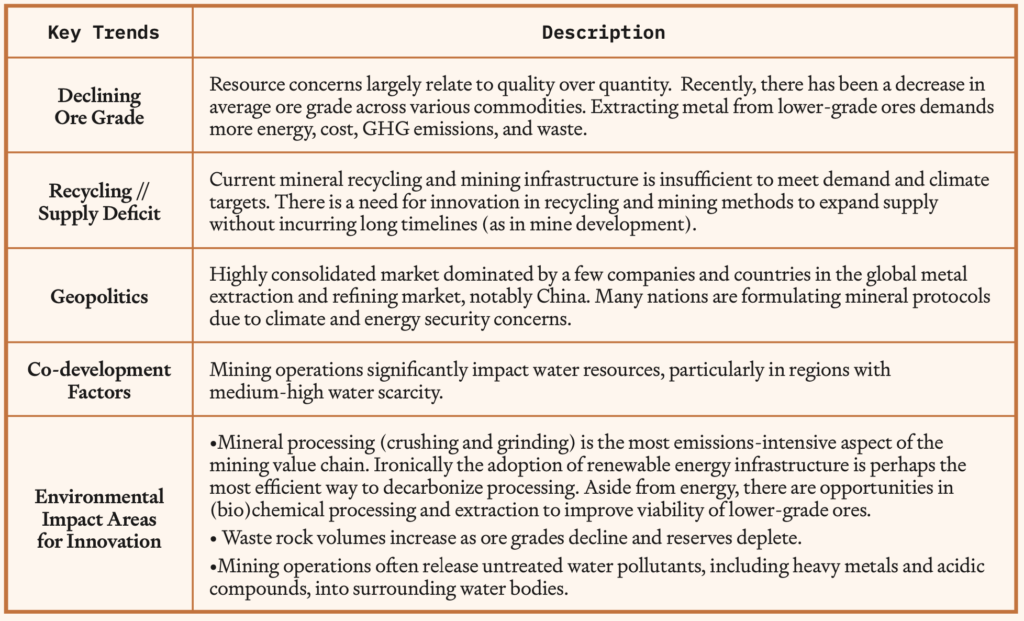
Why focus on this problem now?
Governments and industry leaders worldwide are recognizing the critical role that metals and minerals have to play in establishing a clean and secure energy future. Unfortunately, this recognition has only widened the demand-supply gap for many critical metals (e.g., copper, lithium, cobalt). Mining operations simply cannot keep pace, and those that are operational and/or in development are plagued by concerns over resource quality, environmental implications, and human health impacts.
Takeaways from the expert discussion
In addition to seeking new materials that reduce our reliance on extractive processes, investing in technologies that drive process improvements in mining and recycling—the beginning and end of the battery value chain—is essential. To address the less than 1% success rate at the exploration phase in mines, machine learning-powered exploration tools may provide significant improvements in accuracy. While recycling is technically the “end” of the value chain, it can also be thought of as a new beginning. Signals such as Europe’s leading battery manufacturer, Northvolt, announcing a goal to have 50% of the raw materials sourced from recycled materials by 2030, matched with an estimated 1.6 Mt of batteries to be available for recycling in 2030 point to greater circularity on the horizon.
Valo startup utilizing abundant metals and minerals
- Inlyte Energy is deploying reliable and affordable grid-scale batteries made from inputs in abundant supply—iron and sodium.
4. Biomass
Biomass serves as sustenance for biodiversity. A mere teaspoon of soil harbors over 8 miles of intricate fungal threads, highlighting the remarkable extent of biodiverse activity beneath our feet. Biomass is also a ubiquitous byproduct of our environment and amounts to billions of tons annually from agricultural and industrial waste. Capitalizing on biomass necessitates innovative manufacturing approaches, and its strategic extraction offers unique value to corporations in energy production, waste management, and carbon credit generation.
The Problem: Mounting biodiversity loss paired with an increasing need for biomass and nature services.
The world’s biodiversity is rapidly declining, posing grave threats to both our economic and natural systems. S&P concluded that 85% of the biggest companies in the world are highly dependent on nature. Examples of this include CPG companies that need access to clean water, microbes that stabilize phosphorus and nitrogen in agricultural soils to keep them fertile, and natural materials that supply the fashion industry. Given the invaluable role that flora and fauna play in ecosystem maintenance, how can we harness their energy and enhance their natural regulatory capacity?
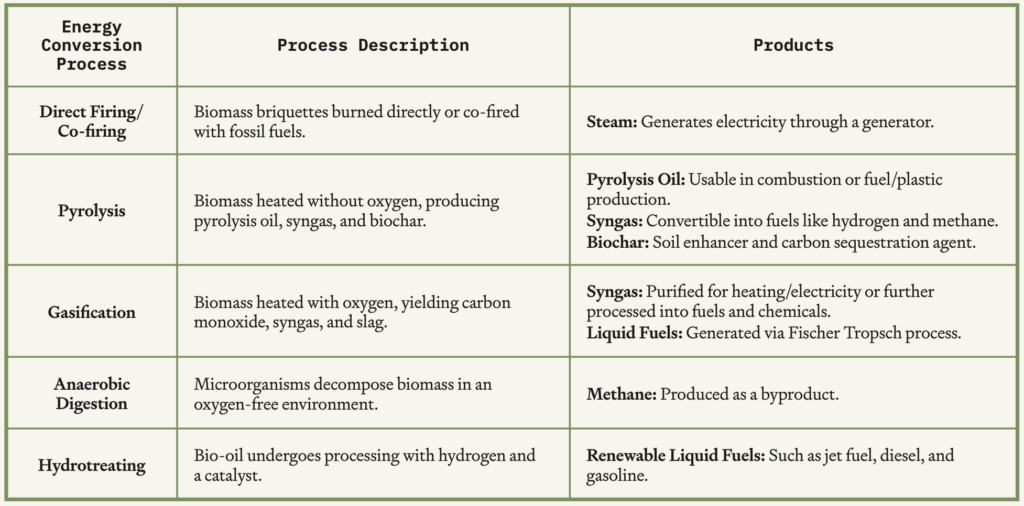
Why focus on this problem now?
- Regulation: In the European Union starting this year, the Corporate Sustainability Reporting Directive (CSRD) mandates that 50,000 companies disclose their strategic sustainability plans and align them with global biodiversity goals, including achieving net gain by 2030 and full recovery by 2050.
- Business Demand: About a third of Europe’s largest companies have set biodiversity or deforestation targets and are focusing on securing their sourcing and supply chain relationships. Currently, biomass represents around 24% of global material consumption, primarily consisting of straw, wood, cereals, sugar crops, and grass used for grazing.
- Technology: Advances in technologies such as eDNA, sensors, and AI to analyze large satellite imagery datasets are providing a myriad of previously non-existent options for monitoring ecosystems and providing a pathway to better understanding them.
- Energy Needs: All biomass stores solar-derived energy and carbon absorbed through photosynthesis. This energy can be converted into usable forms through direct methods like burning for heat or electricity, or indirectly through biofuel production. As biomass is combusted and regrown, it absorbs carbon, rendering modern bioenergy almost carbon-neutral.
Takeaways from the expert discussion
Utilizing agricultural waste as a feedstock for manufacturing necessitates innovative manufacturing methods but also enables growing sectors, such as precision fermentation. While agricultural waste is very cheap, we need more science and technology innovations to make it into usable and valuable materials. The group saw promise in using biomass as a biofuels feedstock and noted the ‘radius effect’ needed to keep the unit economics favorable. Specifically, transit costs should be avoided or minimized so that the upside of ultra-cheap feedstock is not diminished by cumbersome logistics. Building plants that take biomass as feedstock within reasonably close proximity to the biomass feed sources will therefore be key.
Valo startup mapping biodiversity to design new products:
- Basecamp Research is building the world’s largest protein database to revolutionize protein discovery and biodesign to power the low-carbon bio-economy.
In Summary
The discussions highlighted both the urgency and complexity of reimagining our approach to working with these four materials. They also emphasized the importance of valuing “waste” as a resource and designing systems to minimize inefficiencies across the value chains that touch carbon, metals, biomass, and plastics.
Despite the myriad challenges, there was a tangible sense of optimism in the room, with entrepreneurs showing a commitment to creating a more abundant future.
